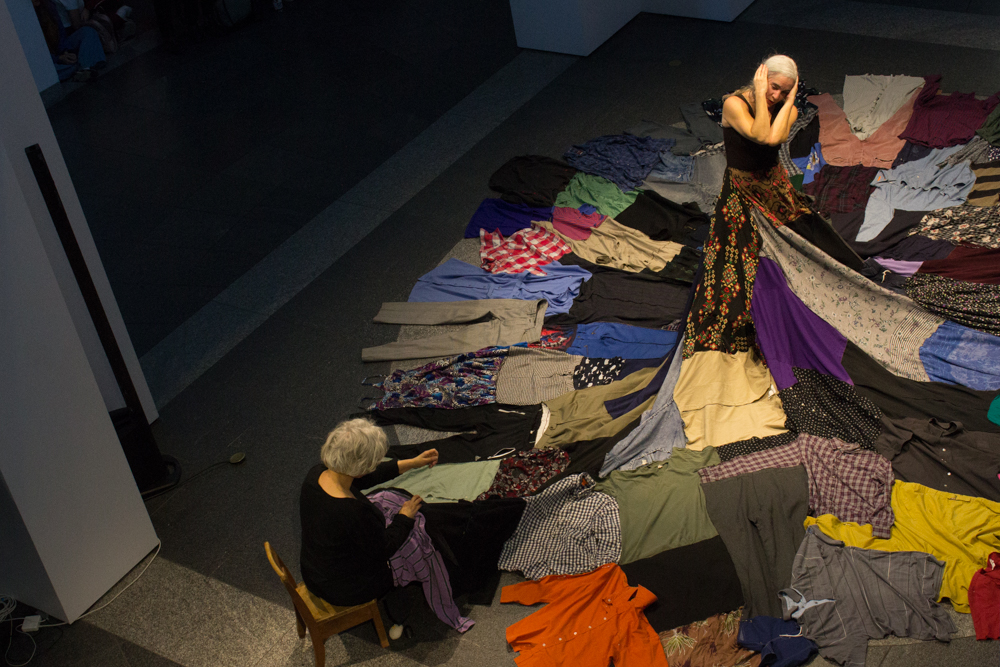Needle and Thread is an ode to those who were lost
Every stitch, every letter spelled out during Needle and Thread retrieves the memories of 600 Holocaust victims. “We’re not going for spectacle,” Mindy Yan Miller said. “But authenticity, experience, feeling…”
Needle and Thread is a collaborative, commemorative performance by Mindy, a professor in the department of fibres and material practices at Concordia, and her sister-in-law, Suzanne Miller. Suzanne is a contemporary choreographer and dancer, whereas Mindy works primarily in installation and sculpture with used clothing, cowhide and human hair.
In this performance, Suzanne uses her body to spell out the names of the 600 Holocaust victims, wearing a long, patchwork skirt, which Mindy is tirelessly adding to. The massive garment is composed of many shirts, dresses, skirts and pairs of pants joined together with a simple blanket stitch. The names of the victims are recorded in the “Pages of Testimony” submitted to Yad Vashem World Holocaust Remembrance Center in Jerusalem.
Mindy is the ground, my anchor, the base note [of Needle and Thread,] and I am the air,” said Suzanne.
Suzanne trembled, sweat gleaming off her chest, as she embodied the very lives and the stories behind the names she spelled. Her movements are not that of conventional dance, but of a gestural language that can only be understood through witnessing.
She reaches in, towards her chest, falls on the ground, covers her eyes with one, then two hands. She looks back, then up, she twists, clasps her hands, touching her elbow to her side.
Mindy stitches, never looking up, she is static. Only moving to reach into her tool pouch to thread a needle.
The names are spelled on a blackboard, as a man whispers them to the writer. She writes quickly, the name is spelled out, on the board, and by Suzanne. The writer erases, and moves on to the next. This takes 10 seconds.
“It’s not about provoking,” Suzanne said. Needle and Thread is jarring. The power of their actions resonate with the audience.
The sister-in-laws were invited to perform this piece in the Musée d’Art Contemporain as part of Off Parcours Danse, a dance conference that took place from Nov. 25-29 at Place des Arts. Needle and Thread was developed last year at “Jews and Jewishness in the Dance World,” part of a series of Jewish arts conferences held at Arizona State University, and has since been performed close to Jewish sites across North America and Europe. Each time, something changes, is lost or added, effectively creating a different experience for viewers. The skirt grows, bit by bit.
Photo by Britanny Clarke.
